name: inverse layout: true class: center, middle, inverse --- layout:false # Why is selection (and testing) important .red[*] .left-column50[  ] .right-column50[  ] .footnote[.red[*] [Washington Post Article](https://www.washingtonpost.com/news/morning-mix/wp/2018/01/16/that-was-no-wrong-button-in-hawaii-take-a-look/?utm_term=.1848969db923) ] --- class: center, middle, inverse # Interaction Technique Design Jennifer Mankoff CSE 340 Winter 2020 --- layout: false [//]: # (Outline Slide) # Today's goals - Running example: [Pet gallery](https://gitlab.cs.washington.edu/cse340-20wi/cse340-petgallery) - Introducing key concepts for menus assignment - Using key properties of people to predict design outcomes --- # Revisiting event records Event record: - Where - Where is the location of the cursor (x,y position on the screen) - For focus based events, where is often the target (Lauren's lecture covered this) - Value is anything you might need to know (like whether it's a 1 or 2 finger swipe; or which key was pressed) Why is this important? For *picking*: - When input is positional, *only* interactors whose bounding box includes (x,y) -- where -- are picked - When input is focus based, *only* interactors in the focus list are picked. Where isn't used in dispatch --- # Menus Assignment Will compare pie menus to linear menus We provide support for running the experiment in MainActivity (and a testing harness in TestActivity) You implement a variety of menus --- # Menus Assignment <div class="mermaid"> classDiagram class MenuExperimentView { onTouchEvent() startSelection() endSelection() updateModel() onDraw() } AbstractMenuExperimentView <|-- MenuExperimentView AbstractMainActivity <|-- MainActivity AbstractMainActivity <|-- TestActivity MenuExperimentView <|-- PieMenuView MenuExperimentView <|-- NormalMenuView MenuExperimentView <|-- CustomMenuView </div> --- # What is a Menu in theory? ??? - supports selection of an item from a fixed set – usually set determined in advance - typically used for “commands” - occasionally for selecting a value (e.g., picking a font) -- .left-column-half[ - supports selection of an item from a fixed set – usually set determined in advance - typically used for “commands” - occasionally for selecting a value <br> (e.g., picking a font) ] -- <div class="mermaid"> graph TD S((.)) --> A(Start) A -- "Press?startSelection()" --> I(Selecting) I -- "Release:endSelection()" --> E[End] I -- "Drag:updateModel()" --> I classDef finish outline-style:double,fill:#d1e0e0,stroke:#333,stroke-width:2px; classDef normal fill:#e6f3ff,stroke:#333,stroke-width:2px; classDef start fill:#d1e0e0,stroke:#333,stroke-width:4px; classDef invisible fill:#FFFFFF,stroke:#FFFFFF,color:#FFFFFF class S invisible class A start class E finish class I normal </div> ??? Implemented in MenuExperimentView Works in all Menus! --- # What is a Menu in theory? .left-column-half[ - supports selection of an item from a fixed set – usually set determined in advance - typically used for “commands” - occasionally for selecting a value <br> (e.g., picking a font) Implemented in MenuExperimentView Works in all Menus! ] <div class="mermaid"> graph TD S((.)) --> A(Start) A -- "Press?startSelection()" --> I(Selecting) I -- "Release:endSelection()" --> E[End] I -- "Drag:updateModel()" --> I classDef finish outline-style:double,fill:#d1e0e0,stroke:#333,stroke-width:2px; classDef normal fill:#e6f3ff,stroke:#333,stroke-width:2px; classDef start fill:#d1e0e0,stroke:#333,stroke-width:4px; classDef invisible fill:#FFFFFF,stroke:#FFFFFF,color:#FFFFFF class S invisible class A start class E finish class I normal </div> --- # Aside: Enums .left-column-half[ Group of named constants - Used for PPS in colorPicker (PPS States; Essential Geometry) - Used for PPS in Menu assignment *and* for experimental conditions - Easy to inspect if you want to (can use to determine possible states, number items, etc) [Documentation](https://docs.oracle.com/javase/tutorial/java/javaOO/enum.html) ] .right-column-half[ <div class="mermaid"> classDiagram class TaskType { LINEAR RELATIVE UNCLASS } class State { START SELECTING } class MenuType { NORMAL PIE CUSTOM } </div> ] --- # How do we draw a menu? .left-column-half[ Coordinates depend on which class you're in MenuExperimentView set to `MATCH_PARENT` Makes drawing tricky Translate (like a parent view does for kids) ] .right-column-half[ <div class="mermaid"> classDiagram MenuExperimentView <|.. PieMenuView : onDraw translates and calls drawMenu class PieMenuView { Canvas: 0,0 at first touch point. Clipping rect: Whole screen drawMenu() } class MenuExperimentView { Canvas : 0,0 at top left of screen; Clipping rect: Whole screen onDraw() translate } </div> ] ??? Do we have to translate back? -- We don't have to rotate or translate back because this is an inheritance drawing trick, not an interactor hierarchy drawing implementation --- # Aside: Custom Listeners - Used in ColorPicker and Menus. You'll use them lots - Why create custom listeners? -- - Let you execute code when your view's model has changed - No other way to know that has happened --- # How to implement Custom View needs - To define the custom interface - To keep track of listeners -- Anything using the view needs - To implement the interface (specifically, the method that will be called) - To register itself as a listener --- # Example Custom View -- ColorPicker: We setup the Custom View side for you ```java // Currently registered ColorListener instance or null. private List<ColorChangeListener> mColorChangeListeners; // Class which defines a listener to be called when a new color is selected. public interface ColorChangeListener { void onColorSelected(@ColorInt int color); } // Registers a new listener public final void addColorChangeListener(@NonNull ColorChangeListener colorChangeListener) { mColorChangeListeners.add(colorChangeListener); } ``` --- # Example Custom Listener -- ColorPicker: We implemented this .left-column-half[ `// TODO: Register callback to update {color,label} View when color changed.` What method do we call to register the callback? `addColorChangeListener()` What do we usually do in a callback? update application (`MainActivity`) model ] .right-column-half[ <div class="mermaid"> classDiagram MainActivity ..> ColorPickerView : addColorChangeListener() MainActivity --> ColorChangeListener : Contains class ColorChangeListener { onColorChanged() } class ColorPickerView { addColorChangeListener() } class MainActivity { ColorPickerView view } </div> ] --- # Example Custom Listener -- ColorPicker: We implemented this .left-column-half[ `// TODO: Register callback to update {color,label} View when color changed.` What method do we call to register the callback? `addColorChangeListener()` What do we usually do in a callback? update application (`MainActivity`) model ] .right-column-half[ <div class="mermaid"> classDiagram ColorPickerView ..> ColorChangeListener : onColorChanged() ColorChangeListener ..> MainActivity : update model class ColorChangeListener { onColorChanged() } class MainActivity { ColorPickerView view } </div> ] --- # You need to do this yourself in Menus ```java // TODO: register a new listener with the menu so that the application knows when a selection is made // TODO: implement the listener. When the user completes a trial, the menu listener should store // the results of the trial, and setup for the next trial ``` --- class: center, middle, inverse # Experimenting with Interfaces Important part of buliding interfaces is experimenting Need structured ways to decide what's better --- # Experiments should be tied to *hypotheses* based on *theories* what will go better - Fitts Law (compare distance and size; check for infinite size) - Steering Law (distance and size over a path) - Cognitive modeling (complex multi-step model of expert behavior) - Does someone have to 'check' something? More than once? - Do they have to move? More than once - Gestalt Psychology (will they see it at all?) - Errors (will they be reduced) ??? why theory and not intuition? --- # Which is better and which laws explain it? .left-column50[ ## A Pie Menu 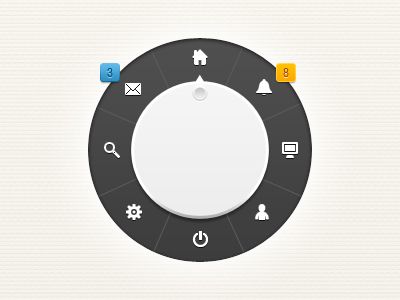 ] .right-column50[ ## B Pull down Menu  ] ??? What analysis methods can we use to predict? - *Fitts Law* (compare distance and size; check for infinite size) - Steering Law (distance and size over a path) - Cognitive modeling (complex multi-step model of expert behavior) - Does someone have to 'check' something? More than once? - Do they have to move? More than once - Gestalt Psychology (will they see it at all?) - Errors (will they be reduced) --- # Steering Law (based on Fitts' law) .left-column50[ ## A Pie Menu  ] .right-column50[ ## B Pull down Menu  ] --- # Which is better and which law explains it? .left-column50[ ## A Pie Menu  ] .right-column50[ ## B Marking Menu ![:youtube Video assigned before class, 8c58bN6ajJ4?t=30] ] ??? - Fitts Law (compare distance and size; check for infinite size) - Steering Law (distance and size over a path) - Cognitive modeling (complex multi-step model of expert behavior) - **Does someone have to 'check' something? More than once?** - **Do they have to move? More than once** - Gestalt Psychology (will they see it at all?) - Errors (will they be reduced) --- # Cognitive modeling (less double checking) .left-column50[ ## A Pie Menu  ] .right-column50[ ## B Marking Menu ![:youtube Video assigned before class, 8c58bN6ajJ4?t=30] ] --- # Which is better and which laws explain it? A: Tapping B: Crossing ![:youtube Video of using crossing for selection, kp2Zl4ONuik] ??? - **Fitts Law (compare distance and size; check for infinite size)** - Steering Law (distance and size over a path) - Cognitive modeling (complex multi-step model of expert behavior) - Does someone have to 'check' something? More than once? - Do they have to move? More than once - Gestalt Psychology (will they see it at all?) - Errors (will they be reduced) --- # Fitts' Law (infinite width) A: Tapping B: Crossing ![:youtube Video of using crossing for selection, kp2Zl4ONuik] --- # Which is better and which laws explain it? .left-column50[ ## A 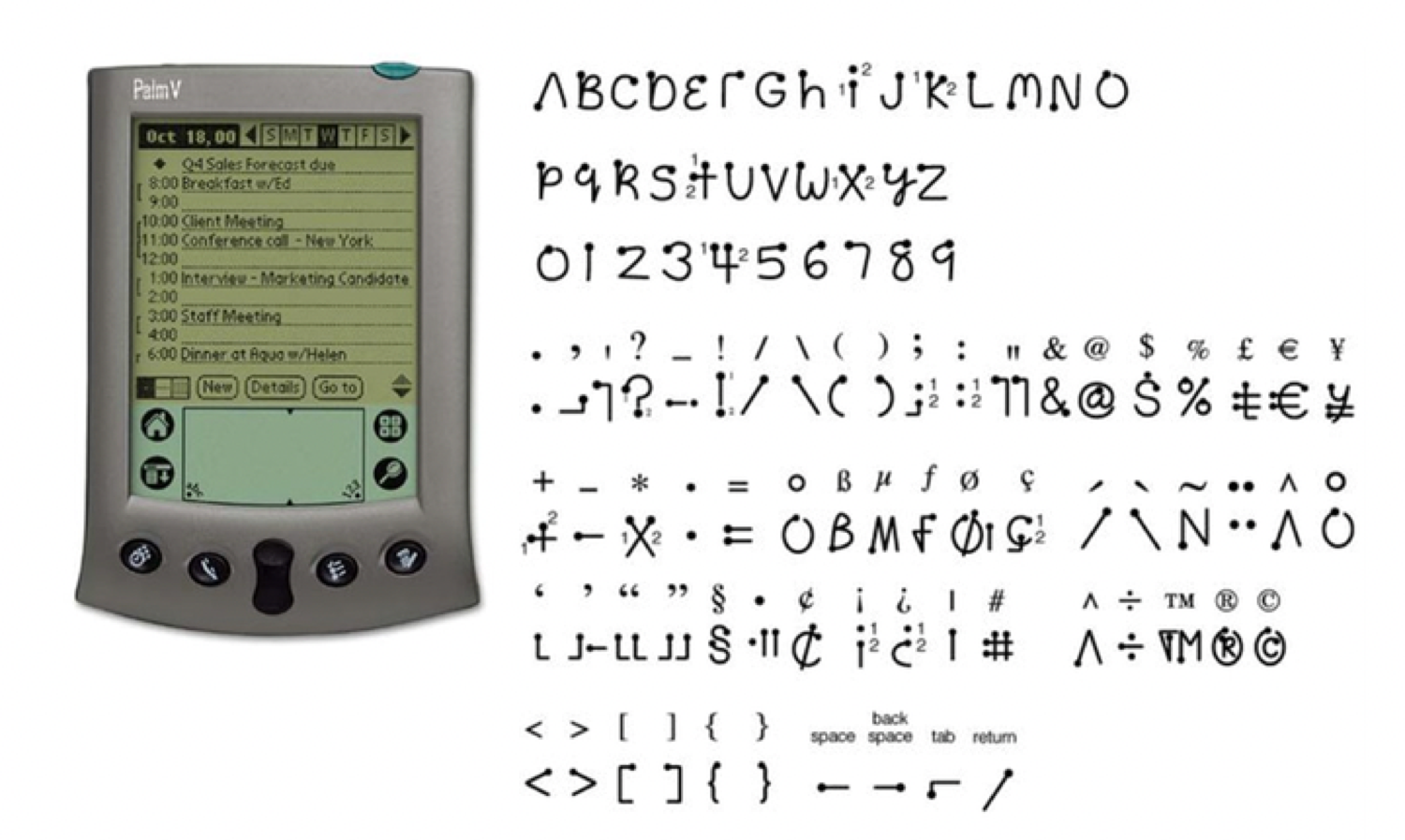 ] .right-column50[ ## B 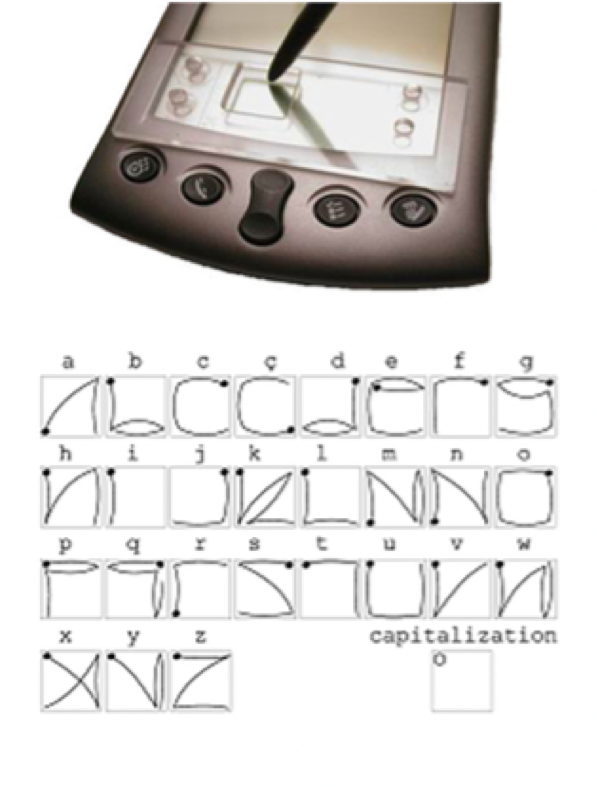 ] ??? - Fitts Law (compare distance and size; check for infinite size) - Steering Law (distance and size over a path) - Cognitive modeling (complex multi-step model of expert behavior) - Does someone have to 'check' something? More than once? - Do they have to move? More than once - Gestalt Psychology (will they see it at all?) - **Errors (will they be reduced)** --- # Errors (better physical feedback during motor task) .left-column50[ ## A  ] .right-column50[ ## B  ] --- # Which is better and which laws explain it? .left-column50[ ## A  ] .right-column50[ ## B 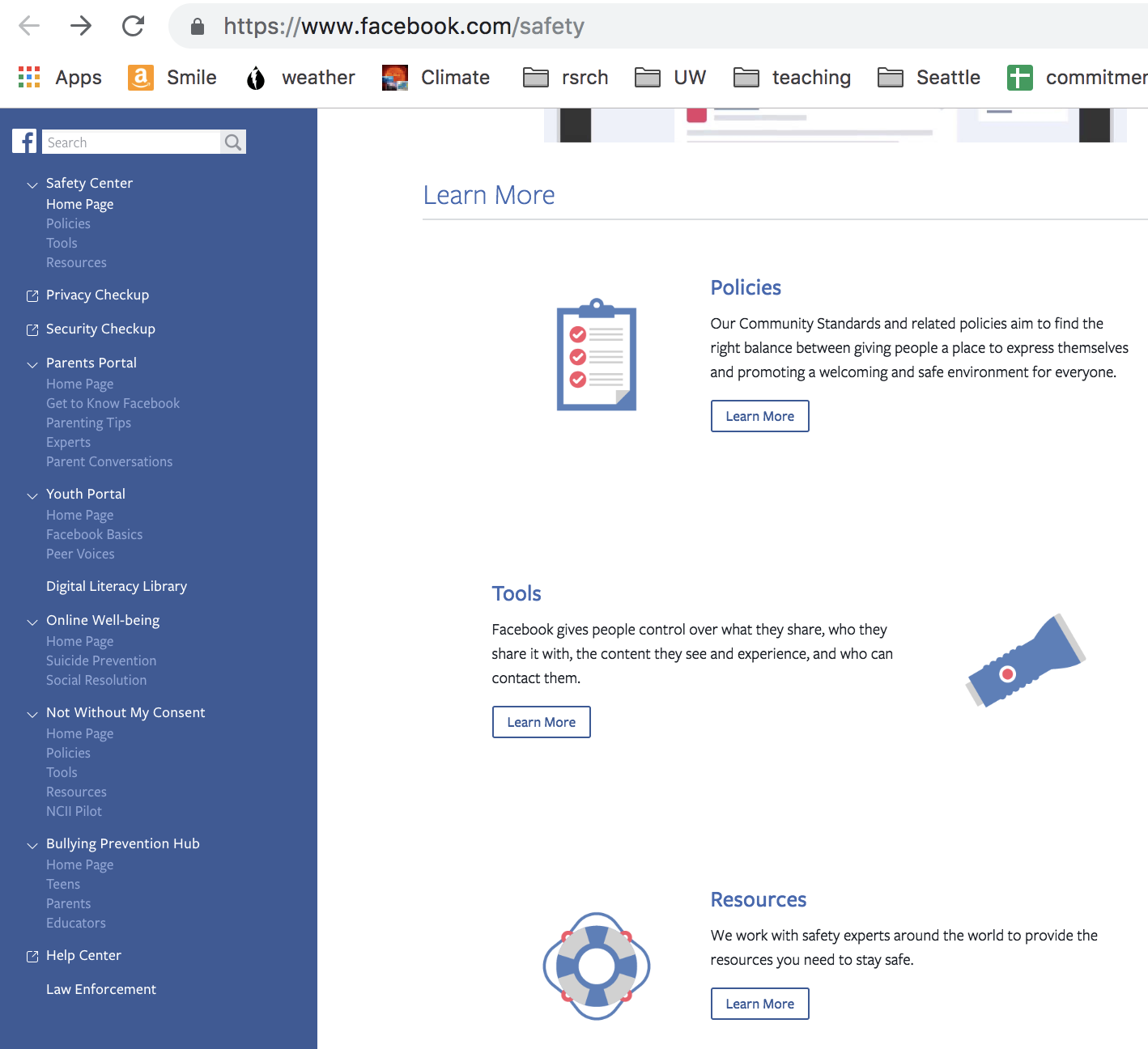 ] ??? - Fitts Law (compare distance and size; check for infinite size) - Steering Law (distance and size over a path) - Cognitive modeling (complex multi-step model of expert behavior) - Does someone have to 'check' something? More than once? - Do they have to move? More than once - **Gestalt Psychology (group?)** - **Errors (will they be reduced)** --- # Gestalt Psychology (better grouping strategies) .left-column50[ ## A  ] .right-column50[ ## B  ] --- # Back to comparing menus Kurtenbach: ![:youtube Illustration of advantages of marking menus,dtH9GdFSQaw] --- # How do we prove our theories? Hypothesis <div class="mermaid"> graph LR S((.)) --> Hypothesis(Hypothesis) classDef finish outline-style:double,fill:#d1e0e0,stroke:#333,stroke-width:2px; classDef normal fill:#e6f3ff,stroke:#333,stroke-width:2px; classDef start fill:#d1e0e0,stroke:#333,stroke-width:4px; classDef invisible fill:#FFFFFF,stroke:#FFFFFF,color:#FFFFFF linkStyle 0 stroke-width:4px; class S invisible class Hypothesis start </div> Discuss -- Marking Menus are better than Pie Menus -- Marking Menus are *faster* than Pie Menus -- Pie Menus are faster than Linear Menus for less than 8 items that have no obvious order --- .left-column-half[ # What conditions does this experiment have? `MenuType` `TaskType` (could be a condition) ] .right-column-half[ # What might we measure? (from Friday) ] -- .right-column-half[ - Time on Task - Accuracy - How strenuous - Recall - Emotional Response ] <!-- --- --> <!-- # Classes that handle experimentation --> <!-- We provide most of the implementation for this --> <!-- <div class="mermaid"> --> <!-- classDiagram --> <!-- class MainActivity { --> <!-- showMenuForTrial() --> <!-- } --> <!-- class AbstractMainActivity { --> <!-- clearCSV() --> <!-- } --> <!-- class MainActivity { --> <!-- showMenuForTrial() --> <!-- } --> <!-- class TestActivity { --> <!-- showMenu() --> <!-- } --> <!-- class TrialListener { --> <!-- onTrialCompleted() --> <!-- } --> <!-- AbstractMainActivity <|-- MainActivity --> <!-- AbstractMainActivity <|-- TestActivity --> <!-- class ExperimentSession { --> <!-- createTrials() --> <!-- getNext() --> <!-- next() --> <!-- } --> <!-- </div> --> --- # How do we prove our theories? Method <div class="mermaid"> graph LR S((.)) --> Hypothesis(Hypothesis) Hypothesis -- "Study Design" --> Method(Method) classDef finish outline-style:double,fill:#d1e0e0,stroke:#333,stroke-width:2px; classDef normal fill:#e6f3ff,stroke:#333,stroke-width:2px; classDef start fill:#d1e0e0,stroke:#333,stroke-width:4px; classDef invisible fill:#FFFFFF,stroke:#FFFFFF,color:#FFFFFF linkStyle 0 stroke-width:4px; linkStyle 1 stroke-width:4px; class S invisible class Hypothesis start class Method normal </div> Compare specific conditions | MenuType | 8 items | 12 items | |----------|---------|----------| | Pie | | | | Marking | | | | Linear | | | What if we wanted to do length AND ordered vs not? Want to consider every combination, or run twice (menuType x length and menuType x ordering) --- # How do we prove our theories? Data <div class="mermaid"> graph LR S((.)) --> Hypothesis(Hypothesis) Hypothesis -- "Study Design" --> Method(Method) Method -- "Run Study" --> Data(Data) classDef finish outline-style:double,fill:#d1e0e0,stroke:#333,stroke-width:2px; classDef normal fill:#e6f3ff,stroke:#333,stroke-width:2px; classDef start fill:#d1e0e0,stroke:#333,stroke-width:4px; classDef invisible fill:#FFFFFF,stroke:#FFFFFF,color:#FFFFFF linkStyle 0 stroke-width:4px; linkStyle 1 stroke-width:4px; linkStyle 2 stroke-width:4px; class S invisible class Hypothesis start class Method,Data normal </div> What might we want to measure? (discussed friday) -- - Time on task -- how long to complete basic tasks? (For example, find something to buy, create a new account, and order the item.) -- - Accuracy -- How many mistakes did people make? (And were they fatal or recoverable with the right information?) -- - How strenuous (e.g. gaze has lower throughput but is less strenuous than head pointing (Mackenzie 2018) -- - Recall -- How much does the person remember afterwards or after periods of non-use? -- - Emotional Response -- How does the person feel about the tasks completed? (Confident? Stressed? Would the user recommend this system to a friend?) ??? Build up a list of good UI design principals from these basics Undo Predictability ... What is missing? (e.g. fun) --- # How to get such data? - Video - Timestamps - Notes - Can transcribe and analyze interviews with users - Can look for patterns across users --- # How do we prove our theories? Analysis <div class="mermaid"> graph LR S((.)) --> Hypothesis(Hypothesis) Hypothesis -- "Study Design" --> Method(Method) Method -- "Run Study" --> Data(Data) Data -- "Clean and Prep" --> Analysis(Analysis) classDef finish outline-style:double,fill:#d1e0e0,stroke:#333,stroke-width:2px; classDef normal fill:#e6f3ff,stroke:#333,stroke-width:2px; classDef start fill:#d1e0e0,stroke:#333,stroke-width:4px; classDef invisible fill:#FFFFFF,stroke:#FFFFFF,color:#FFFFFF linkStyle 0 stroke-width:4px; linkStyle 1 stroke-width:4px; linkStyle 2 stroke-width:4px; linkStyle 3 stroke-width:4px; class S invisible class Hypothesis start class Method,Data,Analysis normal </div> --- # How do we prove our theories? Conclusions <div class="mermaid"> graph LR S((.)) --> Hypothesis(Hypothesis) Hypothesis -- "Study Design" --> Method(Method) Method -- "Run Study" --> Data(Data) Data -- "Clean and Prep" --> Analysis(Analysis) Analysis --> Conclusions(Conclusions) classDef finish outline-style:double,fill:#d1e0e0,stroke:#333,stroke-width:2px; classDef normal fill:#e6f3ff,stroke:#333,stroke-width:2px; classDef start fill:#d1e0e0,stroke:#333,stroke-width:4px; classDef invisible fill:#FFFFFF,stroke:#FFFFFF,color:#FFFFFF linkStyle 0 stroke-width:4px; linkStyle 1 stroke-width:4px; linkStyle 2 stroke-width:4px; linkStyle 3 stroke-width:4px; linkStyle 4 stroke-width:4px; class S invisible class Hypothesis,Conclusions start class Method,Data,Analysis normal </div> 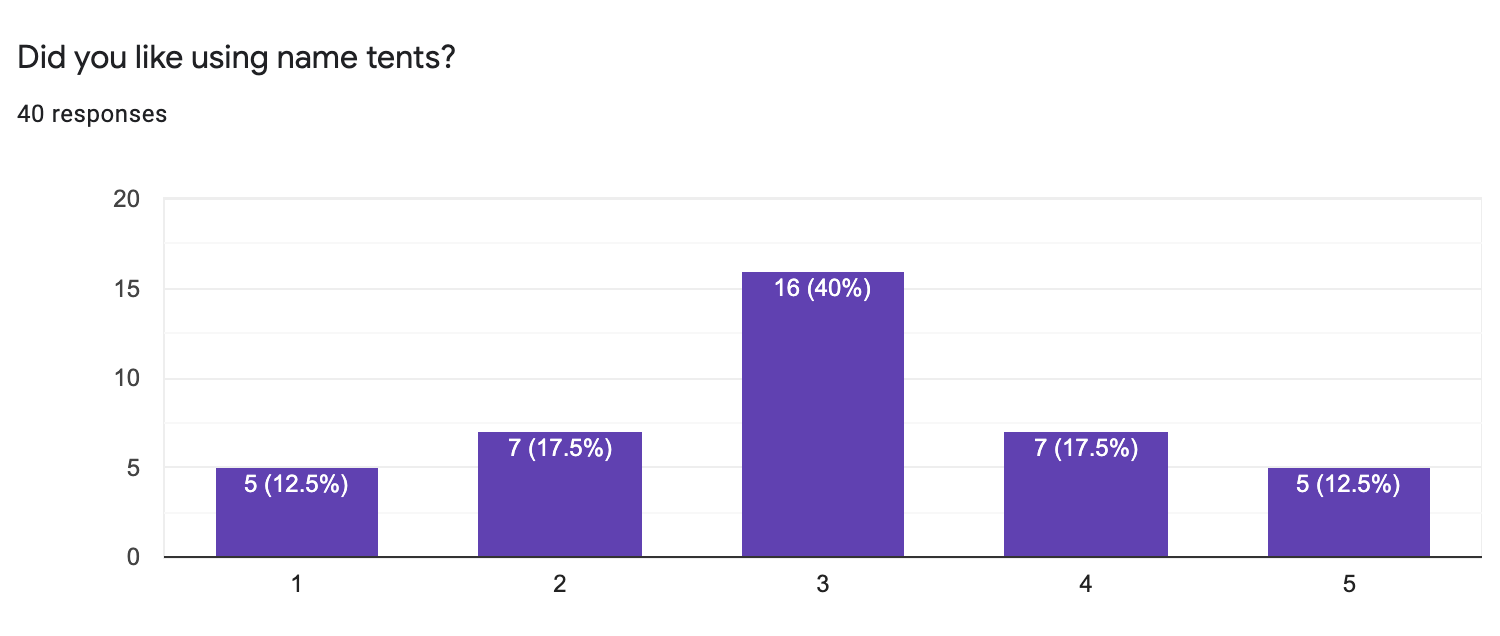 1 = no; 5 = yes 40 responses --- # How do we prove our theories? Conclusions <div class="mermaid"> graph LR S((.)) --> Hypothesis(Hypothesis) Hypothesis -- "Study Design" --> Method(Method) Method -- "Run Study" --> Data(Data) Data -- "Clean and Prep" --> Analysis(Analysis) Analysis --> Conclusions(Conclusions) classDef finish outline-style:double,fill:#d1e0e0,stroke:#333,stroke-width:2px; classDef normal fill:#e6f3ff,stroke:#333,stroke-width:2px; classDef start fill:#d1e0e0,stroke:#333,stroke-width:4px; classDef invisible fill:#FFFFFF,stroke:#FFFFFF,color:#FFFFFF linkStyle 0 stroke-width:4px; linkStyle 1 stroke-width:4px; linkStyle 2 stroke-width:4px; linkStyle 3 stroke-width:4px; linkStyle 4 stroke-width:4px; class S invisible class Hypothesis,Conclusions start class Method,Data,Analysis normal </div> 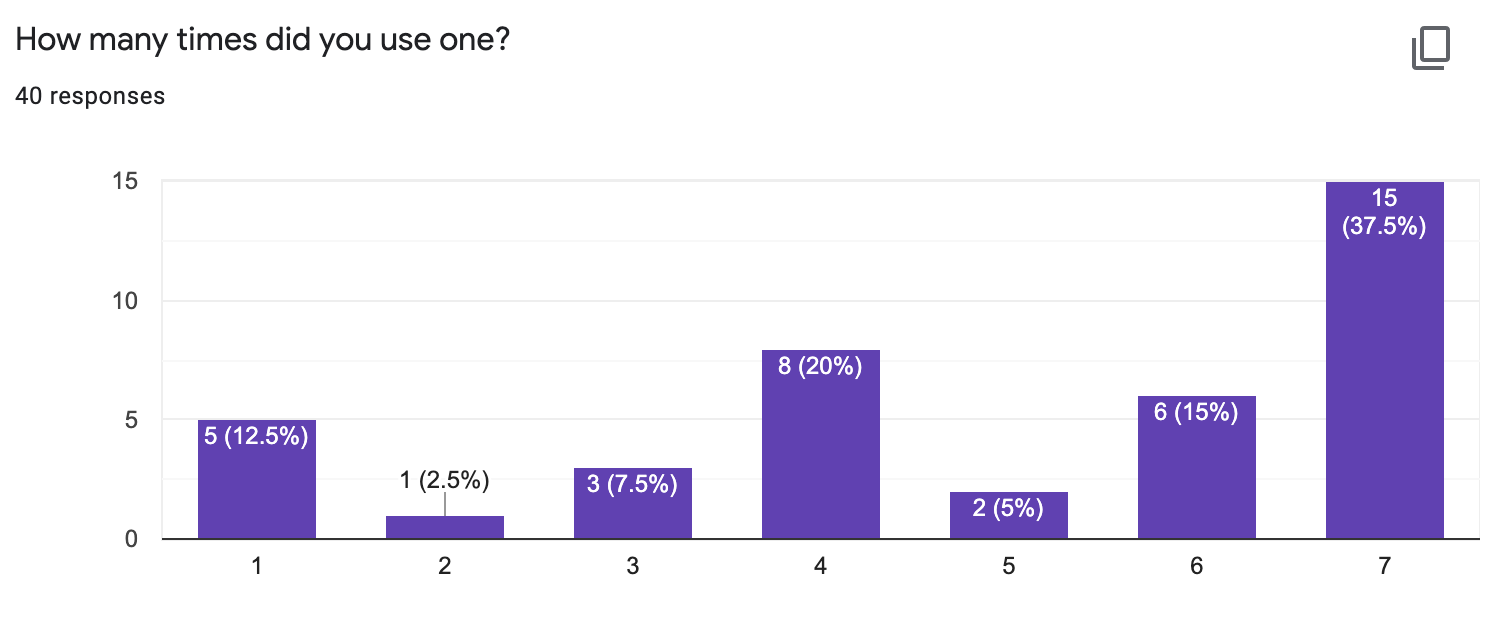 --- # How do we prove our theories? Conclusions <div class="mermaid"> graph LR S((.)) --> Hypothesis(Hypothesis) Hypothesis -- "Study Design" --> Method(Method) Method -- "Run Study" --> Data(Data) Data -- "Clean and Prep" --> Analysis(Analysis) Analysis --> Conclusions(Conclusions) classDef finish outline-style:double,fill:#d1e0e0,stroke:#333,stroke-width:2px; classDef normal fill:#e6f3ff,stroke:#333,stroke-width:2px; classDef start fill:#d1e0e0,stroke:#333,stroke-width:4px; classDef invisible fill:#FFFFFF,stroke:#FFFFFF,color:#FFFFFF linkStyle 0 stroke-width:4px; linkStyle 1 stroke-width:4px; linkStyle 2 stroke-width:4px; linkStyle 3 stroke-width:4px; linkStyle 4 stroke-width:4px; class S invisible class Hypothesis,Conclusions start class Method,Data,Analysis normal </div> 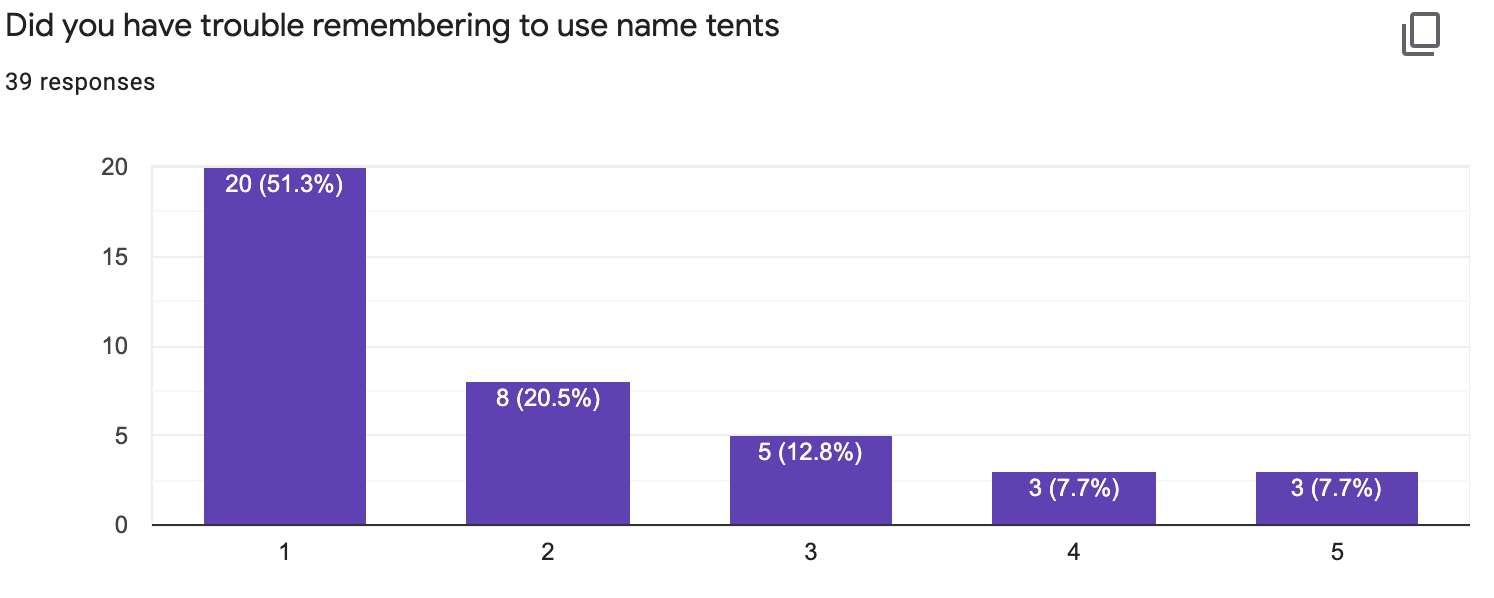 1 = no; 5 = very much --- # Further results of class experiment - 86.7% of students in the class participated in the experiment - There were no big differences between the two groups - The first day (Thu 1/9), very few no-dot students brought their own cards. However, starting with the next class, students were pretty good about bringing their own cards - Students do not seem to bring their cards on Thursday (quiz sections) - Most students have no trouble in remembering name tags - Most students used name tents at least 4 times - Students generally feel okay about using name tents (no strong preference) - There was no evidence that name tents helped the TA remember students' names Some factors that may have impacted the data: - Some students did not attend classes/quiz sections - Some students with dots attended classes but did not find/pick up their cards Charts: https://tinyurl.com/wwaw5la --- <!-- .left-column50[ --> <!-- ## A --> <!--  --> <!-- ] --> <!-- .right-column50[ --> <!-- ## B --> <!--  --> <!-- ] --> <!-- ??? --> <!-- Hypothesis: Errors (will they be reduced) --> <!-- Method:?? --> <!-- Data:?? --> <!-- Analysis?? --> <!-- Conclusions?? --> <!-- --- --> <!-- # How do we prove our theories? Conclusions --> <!-- <div class="mermaid"> --> <!-- graph LR --> <!-- S((.)) -\-> Hypothesis(Hypothesis) --> <!-- Hypothesis -- "Study Design" -\-> Method(Method) --> <!-- Method -- "Run Study" -\-> Data(Data) --> <!-- Data -- "Clean and Prep" -\-> Analysis(Analysis) --> <!-- Analysis -\-> Conclusions(Conclusions) --> <!-- classDef finish outline-style:double,fill:#d1e0e0,stroke:#333,stroke-width:2px; --> <!-- classDef normal fill:#e6f3ff,stroke:#333,stroke-width:2px; --> <!-- classDef start fill:#d1e0e0,stroke:#333,stroke-width:4px; --> <!-- classDef invisible fill:#FFFFFF,stroke:#FFFFFF,color:#FFFFFF --> <!-- linkStyle 0 stroke-width:4px; --> <!-- linkStyle 1 stroke-width:4px; --> <!-- linkStyle 2 stroke-width:4px; --> <!-- linkStyle 3 stroke-width:4px; --> <!-- linkStyle 4 stroke-width:4px; --> <!-- class S invisible --> <!-- class Hypothesis,Conclusions start --> <!-- class Method,Data,Analysis normal --> <!-- </div> --> <!-- .left-column50[ --> <!-- ## A Pie Menu --> <!--  --> <!-- ] --> <!-- .right-column50[ --> <!-- ## B Pull down Menu --> <!--  --> <!-- ] --> <!-- ??? --> <!-- Hypothesis: Errors will be reduced; --> <!-- Hypothesis: Motion will be faster due to low level motor things --> <!-- Hypothesis: fewer cognitive checks needed --> <!-- Method:?? --> <!-- Data:?? --> <!-- Analysis?? --> <!-- Conclusions?? -->